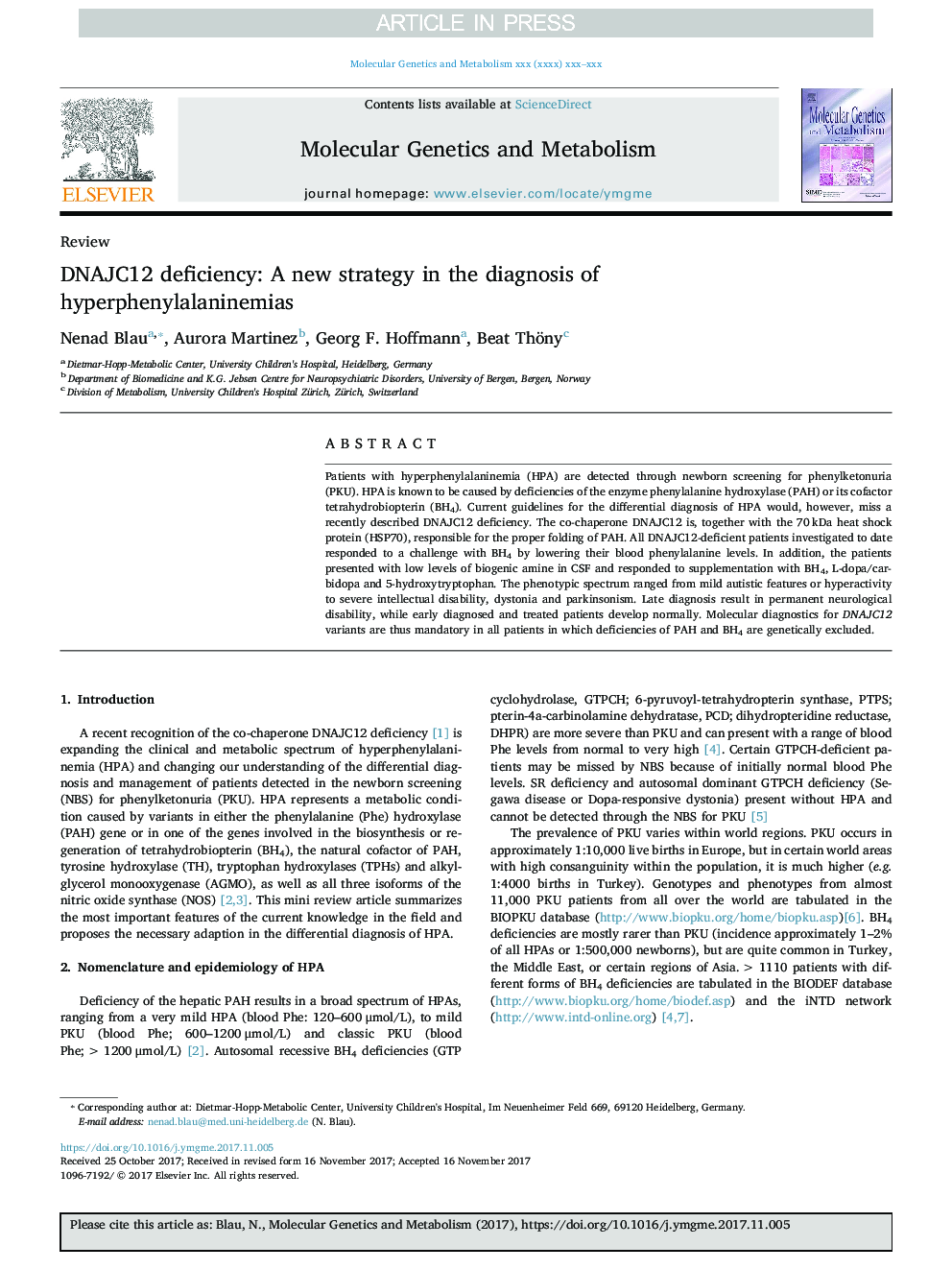| Article ID | Journal | Published Year | Pages | File Type |
|---|---|---|---|---|
| 8343559 | Molecular Genetics and Metabolism | 2018 | 5 Pages |
Abstract
Patients with hyperphenylalaninemia (HPA) are detected through newborn screening for phenylketonuria (PKU). HPA is known to be caused by deficiencies of the enzyme phenylalanine hydroxylase (PAH) or its cofactor tetrahydrobiopterin (BH4). Current guidelines for the differential diagnosis of HPA would, however, miss a recently described DNAJC12 deficiency. The co-chaperone DNAJC12 is, together with the 70Â kDa heat shock protein (HSP70), responsible for the proper folding of PAH. All DNAJC12-deficient patients investigated to date responded to a challenge with BH4 by lowering their blood phenylalanine levels. In addition, the patients presented with low levels of biogenic amine in CSF and responded to supplementation with BH4, L-dopa/carbidopa and 5-hydroxytryptophan. The phenotypic spectrum ranged from mild autistic features or hyperactivity to severe intellectual disability, dystonia and parkinsonism. Late diagnosis result in permanent neurological disability, while early diagnosed and treated patients develop normally. Molecular diagnostics for DNAJC12 variants are thus mandatory in all patients in which deficiencies of PAH and BH4 are genetically excluded.
Related Topics
Life Sciences
Biochemistry, Genetics and Molecular Biology
Biochemistry
Authors
Nenad Blau, Aurora Martinez, Georg F. Hoffmann, Beat Thöny,
